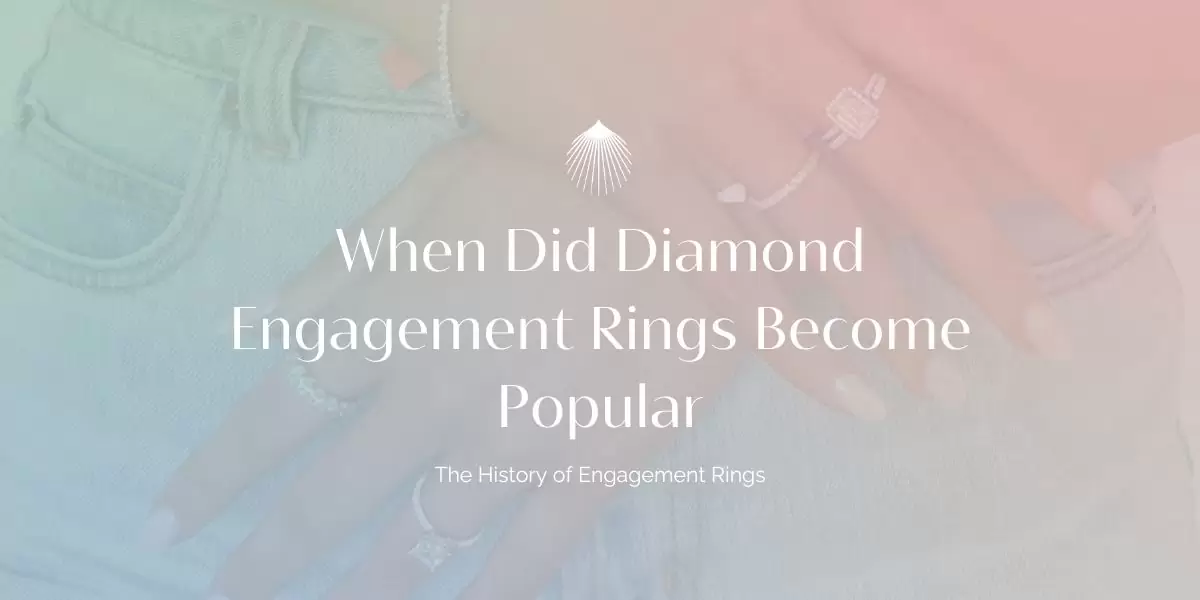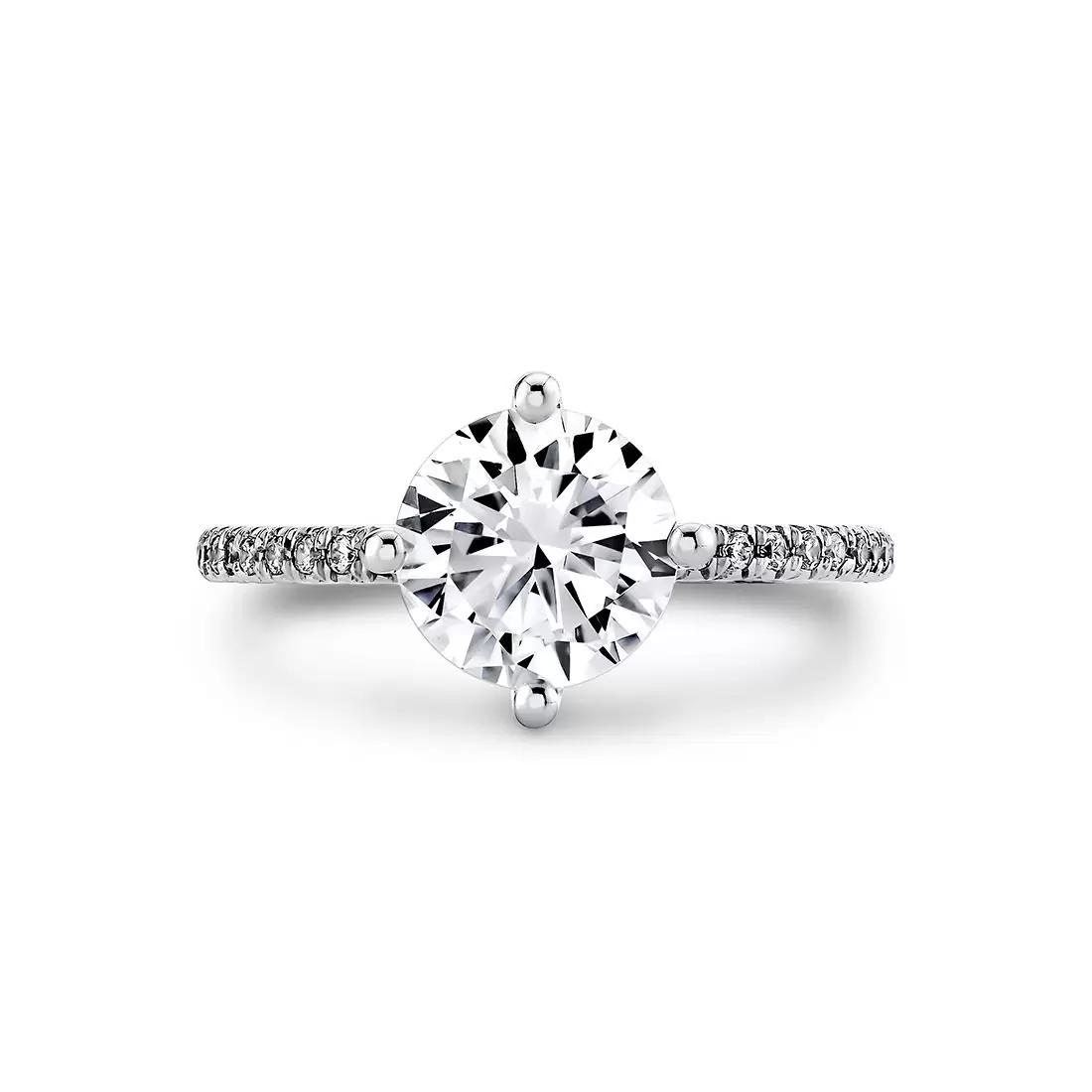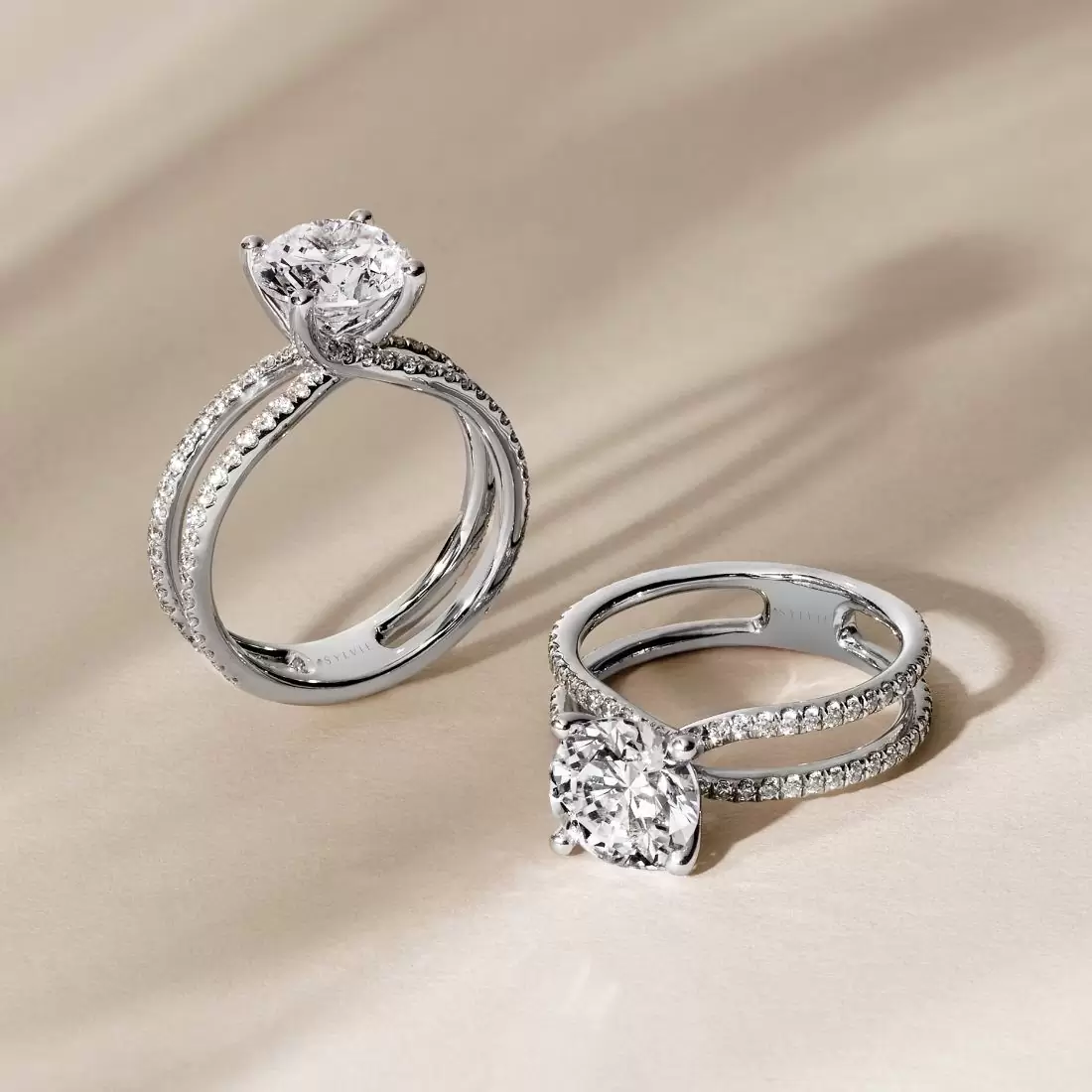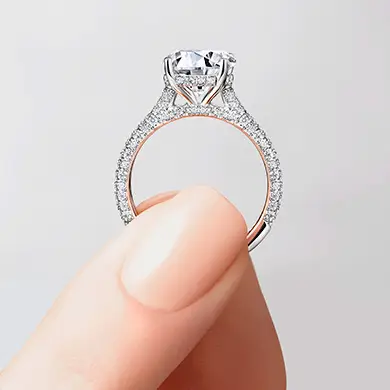Engagement rings have a rich history spanning across all centuries, evolving significantly in their symbolism and design. Originally simple bands used to signify a union, these rings have transformed into intricate pieces that embody personal significance. The transition to diamond engagement rings becoming the standard is a fascinating tale of societal changes, marketing genius, and diamonds’ allure. This shift marked a change in preferences and established diamond rings as a norm in proposals, embedding them deeply in the rituals of commitment and marriage. This blog will look at broader trends in the history of engagement rings, showcasing how these precious pieces have become the ultimate representation of love and commitment and answering the questions ‘when did diamond engagement rings become popular’.
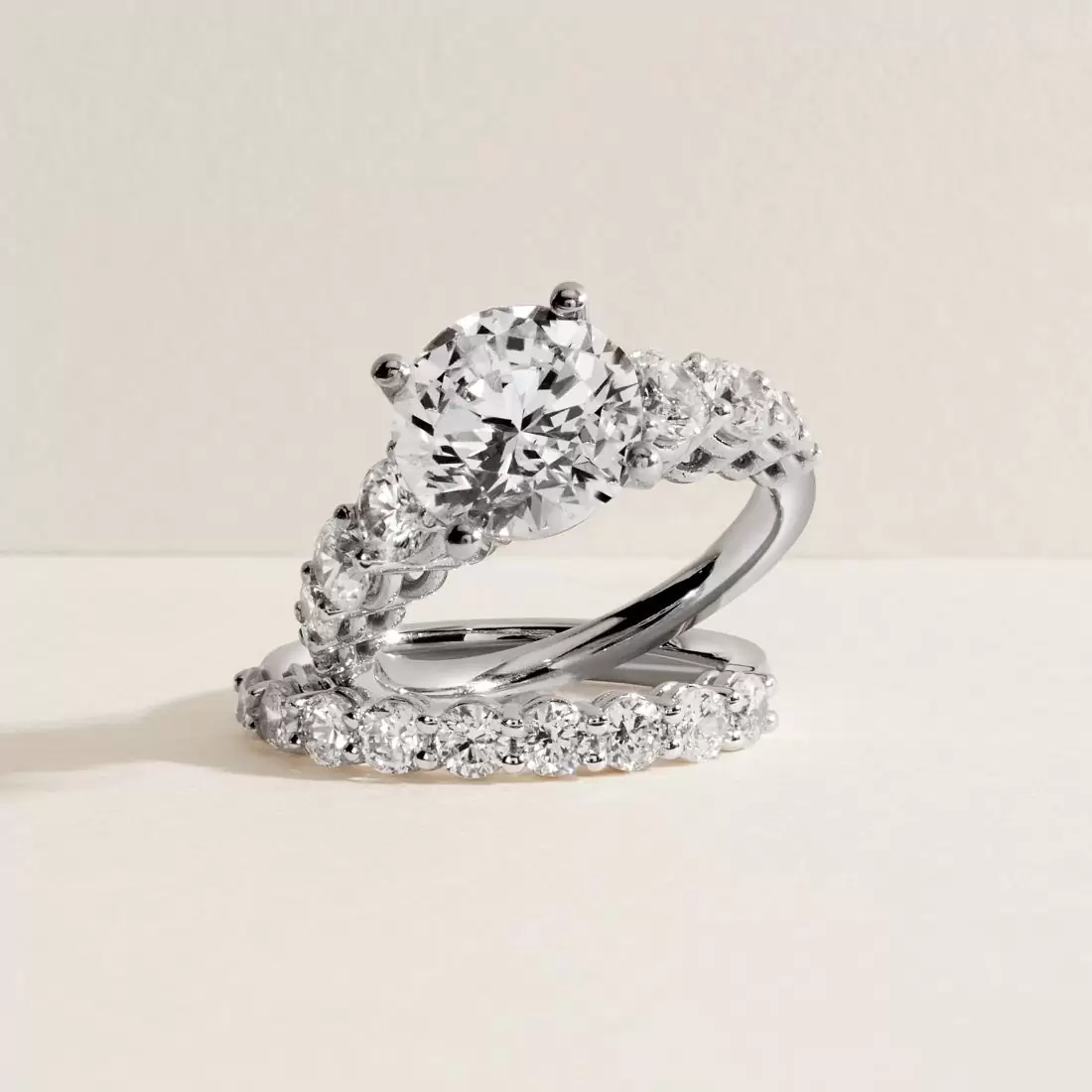
Engagement Ring With Wide Band – Ingrid and matching wedding ring Thick Wedding Band – Ingrid
Early History of Engagement Rings
The tradition of engagement rings dates back centuries, each era adding unique cultural touches. Tracing this history uncovers the evolution of engagement rings from a practical choice to elaborate romantic expressions, revealing much about societal norms and values over time.
Ancient Rome and the Early Use of Rings in Betrothals
In Ancient Rome, the use of rings in betrothals was less about romance and more about legality. Rings were often simple iron bands, given as a part of the Roman custom of declaring intent to marry, and they symbolized a business contract between families rather than a personal pledge of love.
Rings were worn on the fourth finger on the left hand, as it was believed that this finger contained a vein running directly to the heart, a belief that entrenched the ring finger as the chosen bearer of engagement and wedding rings.
Medieval Europe: The Introduction of Posey Rings
The romantic nature of engagement rings, as we understand them today, began to take shape in Medieval Europe with the introduction of posey rings.
These rings, often inscribed with poems or declarations of love, were exchanged as tokens of affection and promises of future marriage. The use of posey rings marked a significant shift in the engagement ring tradition, moving away from the contractual implications of Ancient Rome to embrace a more sentimental and personal expression of commitment.
The Iron Ring: A Symbol of Marriage in Early Societies
In many early societies, the iron ring served as a stark yet significant physical symbol of marriage. These rings were typically plain and robust, reflecting the pragmatic aspects of marriage in times when romantic love was often a secondary consideration to social and economic stability.
The iron ring was valued for its durability, which recalled the enduring nature of the bond it represented. This practical approach to marriage proposals highlights the diverse ways in which different cultures have perceived and sanctified the union of marriage throughout history.
The Rise of Diamond Engagement Rings
As engagement rings evolved through history, the incorporation of diamonds and intricate designs became prevalent, marking a new era of elegance and desirability in bridal jewelry.
Changes particularly influencing this transformation include:
- Societal wealth
- Fashion trends
- The discovery of diamond sources
The Victorian Era: The Advent of Ornate Engagement Ring Designs
The Victorian era was characterized by an intricate and ornate aesthetic, which naturally extended to engagement ring designs. During this period, jewelry became a display of craftsmanship and status, with rings featuring elaborate filigree work and a mix of gemstones. The incorporation of diamonds into these designs began to gain popularity, as diamond rings crafted during the
Victorian era were seen as the ultimate luxury for romance. The designs often included other gemstones set around a larger diamond, creating a radiant effect highlighting the diamond’s natural beauty.
Edwardian Elegance: Diamonds and Precious Metals
Following the Victorian era, the Edwardian era continued to emphasize luxury, focusing more on diamonds and precious metals like platinum. Engagement rings from the Edwardian era are noted for their elegant details. They often feature delicate lace-like designs made possible by platinum. This period saw an increase in the use of pure, white metals, which enhanced the brilliance of the diamonds within them. So, engagement rings became symbols of commitment, refined taste, and high social standing.
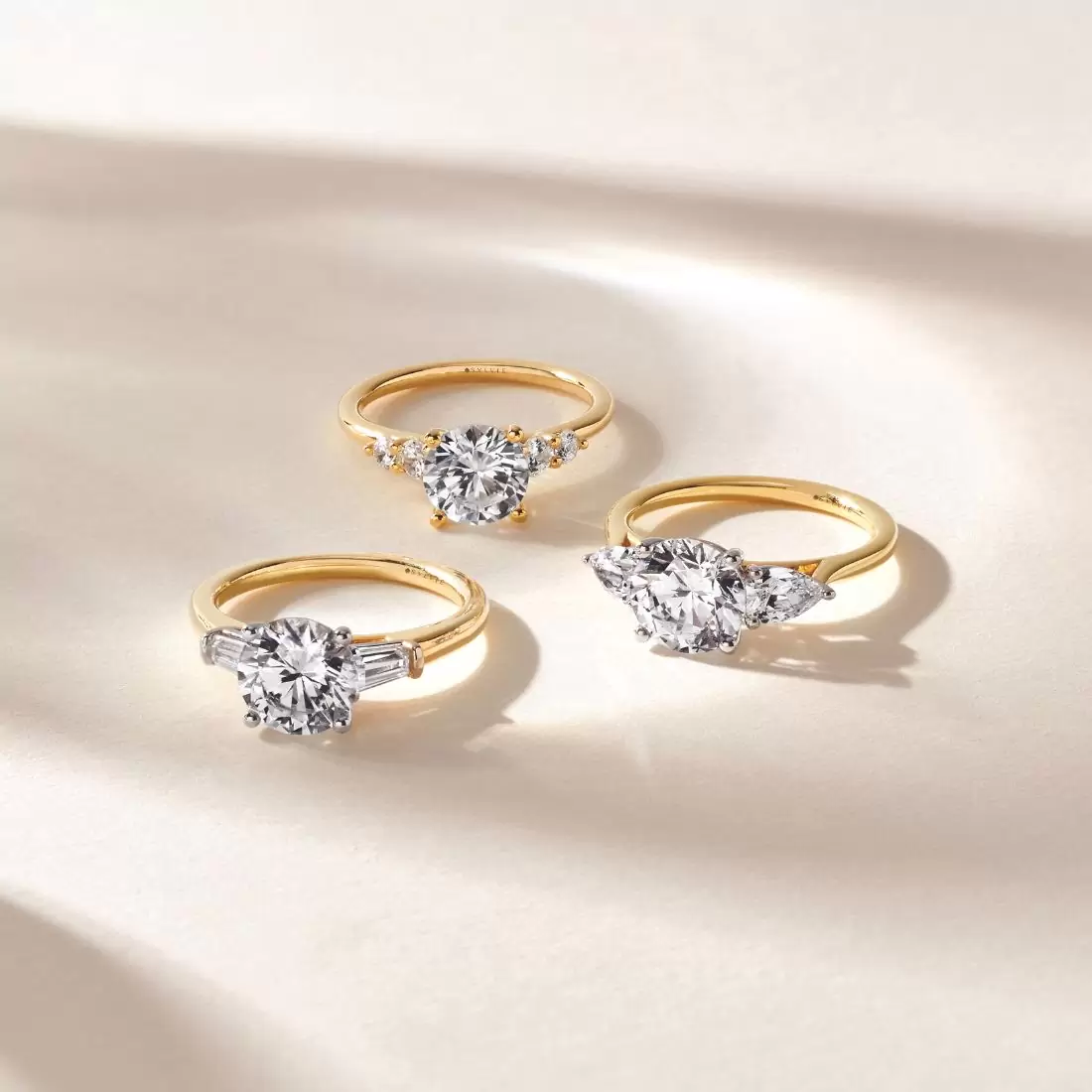
(from left to right) Round Cut Three Stone Engagement Ring With Baguettes – Nicolette, Round Cut Multi Side Stone Engagement Ring – Daria, Round Cut Three Stone Engagement Ring – Martine
How the Discovery of Diamond Mines Influenced Engagement Rings
The latter part of the 19th century brought a significant change with the discovery of abundant diamond mines in South Africa. This discovery drastically altered the diamond market, making diamonds more accessible and affordable. As a result, diamond engagement rings saw a surge in popularity.
They became more widely available, allowing people from various economic backgrounds to partake in the tradition of diamond engagements. The increased supply democratized luxury and cemented the diamond’s role as a central feature in engagement rings, setting a standard that continues to hold sway in the jewelry market today.
“A Diamond Is Forever”: The Campaign That Changed Everything
Perhaps no other phrase in marketing history has had an impact like “A Diamond is Forever.” This marketing campaign, launched in 1947, revolutionized the engagement ring tradition by linking diamonds with the concept of eternal love and commitment. This slogan enhanced the appeal of diamond engagement rings and imbued them with sentimental value that resonated deeply with consumers worldwide, ensuring that diamonds became synonymous with engagements.
The Post-WWII Explosion of Diamond Engagement Ring Popularity
Following World War II, economic prosperity led to an explosion in the popularity of diamond engagement rings. As society embraced stability and traditional values, diamonds began to again stand for the unbreakable bond of marriage and were touted as the purest representation of love. This era solidified the diamond’s status in engagement culture, making it a universal choice for engagement rings that continues to thrive in modern times.
Modern Trends and Variations
As times change, so do the trends in engagement rings. Today’s popular styles and trends reflect a blend of tradition and innovation, where historical preferences meet modern technology and style sensibilities. This section explores how contemporary influences have reshaped the engagement ring landscape.
Hollywood’s Impact: Glamorous Movie Stars and Diamond Rings
Hollywood stars have long been trendsetters in fashion and jewelry, and their impact on engagement ring styles is undeniable. Iconic films and red carpet events often showcase celebrities flaunting stunning diamond rings, setting trends that ripple through society. The influence of glamorous movie stars wearing unique engagement rings has popularized certain styles and settings and solidified the diamond ring’s status as a symbol of luxury and romance in the public’s eye.
The Introduction of Different Diamond Cuts (Princess, Emerald, Oval)
The evolution of diamond-cutting technology has broadened the variety of available diamond cuts, offering couples more personalized options than ever before.
The princess cut provides a modern twist to the cushion cut with its sharp angles and contemporary beauty, while the emerald cut is valued for its elegant and unique facets. The oval cut diamond combines the round diamond with a more elongated shape, catering to those looking for a more flattering shape for their finger.
Lab-Grown Diamonds and Contemporary Choices
The rise of lab-grown diamonds has introduced a new dynamic in the engagement ring market. These diamonds, which are chemically identical to mined ones but more sustainable and often more affordable, appeal to environmentally conscious consumers.
The availability of lab-grown diamonds has not only made diamond engagement rings more accessible but has also encouraged more contemporary choices in ring designs, allowing for a greater expression of personal values and style preferences in the symbols of marital commitment.
These modern trends reflect a broader diversification within the engagement ring market, where the desire for traditional luxury blends with contemporary values and aesthetics.
Conclusion
The diamond engagement ring has transformed from a simple symbol of marriage to an essential emblem of romantic commitment that features a rich history interwoven with cultural significance. These rings, celebrated for their unmatched beauty and durability, have become timeless icons that represent eternal love and hold a cherished memory of a heartfelt proposal.
As engagement ring trends continue to evolve, the diamond engagement ring remains a profound declaration of love, weaving together the past, present, and future of couples around the world.
